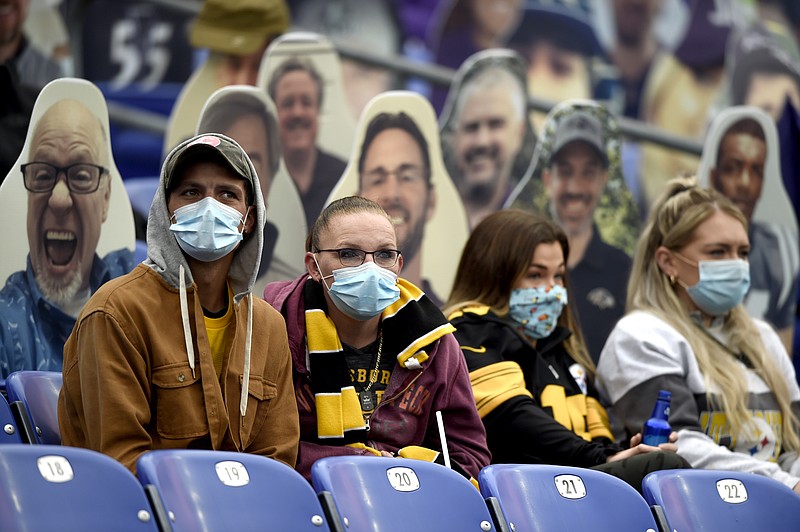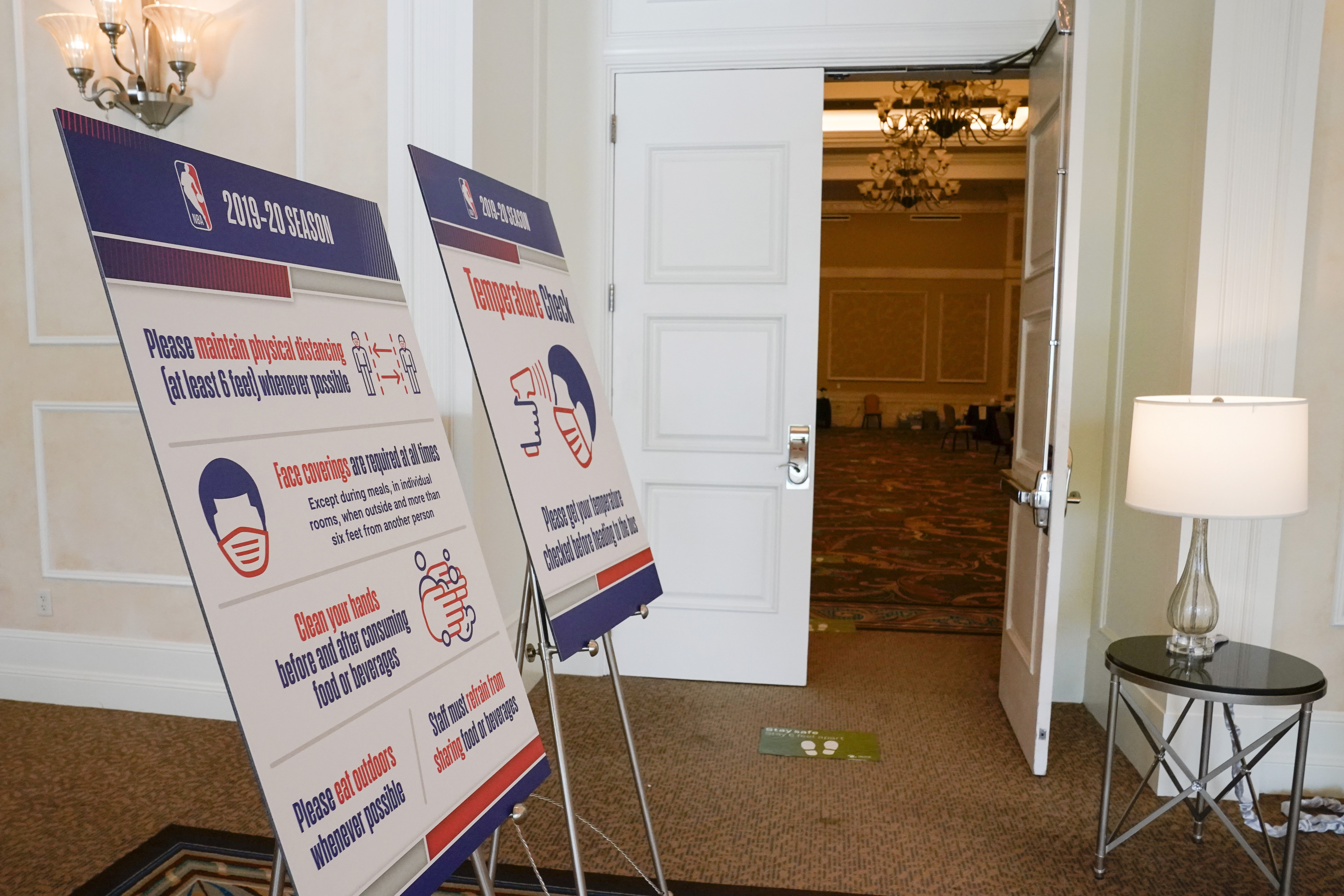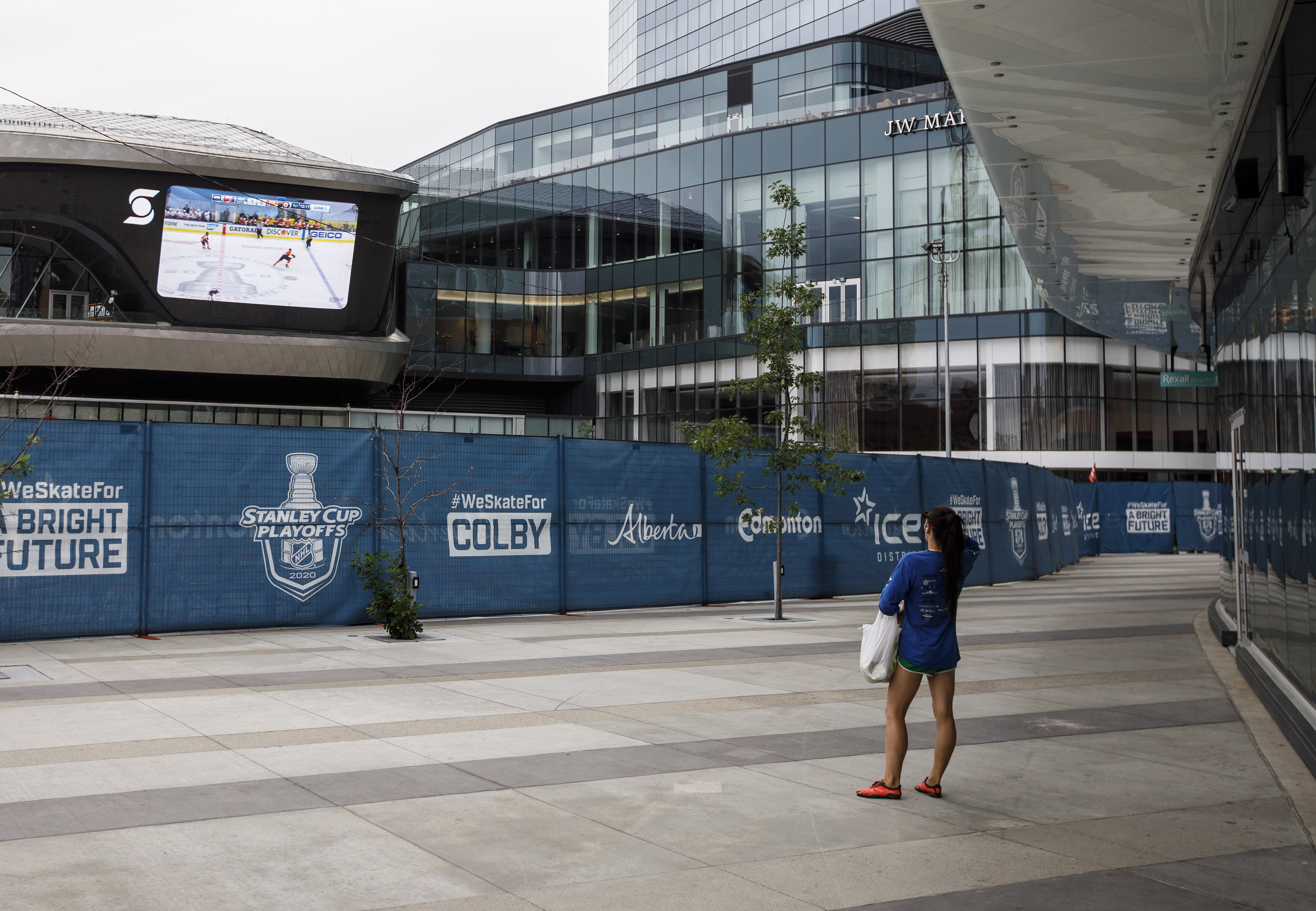The NBA wants to return in December. The NHL is aiming at games resuming in January. MLB spring training may begin in February, like normal.
Those professional sports leagues almost certainly won't be in bubbles if and when any or all of that happens.
However, many of the lessons learned from being in some form of a bubble environment - which allowed the NBA, NHL and Major League Baseball to each crown a champion after finding a way to finish their seasons in most unusual circumstances this year - could apply to whatever the new definition of normal is for basketball, hockey, baseball and other sports as the COVID-19 pandemic continues.
A new set of rules are coming in just about every sport, almost all with enhanced health and safety in mind. If they work, games could return to arenas and stadiums with some fans in attendance sometime soon. Perhaps more importantly, they could also provide some common sense solutions to virus challenges in the real world.
"The testing isn't what made it successful; the testing sort of showed that it was successful," said NBA senior vice president David Weiss, who helped oversee all the health and safety efforts for the league at the Walt Disney World bubble in Lake Buena Vista, Florida. "But the thing that made it successful in the first place was the adherence to all those protocols that most people can follow most of the time in their lives."
There was no magic bullet in the NBA or NHL bubbles: Masks were worn, hand sanitizing was stressed constantly and social distancing was required at all times.
The NBA had teams in the bubble for three months, with the Los Angeles Lakers beating the Miami Heat to win the title in early October. The NHL playoff bubble lasted 65 days in Canada, from the time teams arrived in Edmonton and Toronto until the Tampa Bay Lightning topped the Dallas Stars to win the Stanley Cup in late September. Officials from both leagues noted that masks, physical distancing and other protocols were still being used strictly on the final day.
"It was unique," NHL deputy commissioner Bill Daly said, "but hopefully a once in a lifetime experience."
What happens now?
Even as coronavirus numbers are spiking again across much of the United States, experts don't think it's a pipe dream to have fans, even indoors, with a combination of some screening, masks, distancing and planning how they enter and exit.
"Rapid testing would really change the number of people that you can bring in safely," said Ryan Demmer, a University of Minnesota associate professor of epidemiology and community health. "It's hard to say what the exact number would be. I would not feel comfortable with a full stadium. But maybe instead of 10 or 15%, you could get to 50 or 60%, which is still pretty meaningful in terms of revenues."
Financial concerns are a huge part of the equation regarding what happens next. The NHL estimates half of its revenue comes from ticket holders. MLB said it missed revenue projections for the recently completed season by about $3 billion. The NBA missed its financial mark by $1.5 billion.
Baseball had some fans for games as its playoffs progressed. College football and NFL teams are currently playing in front of very small crowds now in most cases. Finding ways to get more fans into games -and doing so safely - is paramount.
"We understand what happens with fans is going to be a product of what happens with the virus, what decisions public health authorities make in terms of mass gatherings," MLB commissioner Rob Manfred told The Associated Press last month. "It is a huge issue for us in terms of the economics of the game."
Baseball nearly made it through its version of playoff bubbles - limited fans were allowed for the final two rounds - unscathed.
Two innings before the World Series finished at the Texas Rangers' Globe Life Field, the neutral site for both the National League Championship Series and the Fall Classic, Los Angeles Dodgers third baseman Justin Turner was pulled from the game after MLB was notified he had tested positive for COVID-19. He was quarantined in a doctor's office in the stadium, then later returned to the field with a mask to celebrate after the Dodgers beat the Tampa Bay Rays to win their first title since 1988. He then took down his mask and posed for a team photo on the field, a violation of protocol.
The WNBA played its 2020 season in Bradenton, Florida. A few players had false positives, but things mostly ran smoothly - more proof that adherence to rules pays off.
"No one got COVID inside our bubble," said Dan Carlin, CEO and founder of JobSiteCare, which provided the WNBA with its medical staff. "People showed up with COVID. This was a tremendous amount of work to get these people out of circulation before they infected anyone."
'Minimizing risk'
Border and travel restrictions affect the NHL more than any other pro league because seven of its 31 teams are in Canada, which could require some adjustments from the bubble like an all-Canadian division or potentially "pods" around North America hosting games, at least to start next season.
MLB's Toronto Blue Jays played their home games this year in Buffalo, New York; cities are lining up to woo the NBA's Toronto Raptors for the upcoming season, though they remain focused on playing at home.
"We're at the mercy - and we respect it - of governments: state governments, federal governments, provincial governments," NHL senior executive vice president Steve Mayer said.
The NHL learned it doesn't necessarily need to physically fence in players and staff for any quarantine situations next season. The NBA doesn't want another bubble experience. That doesn't mean many of the protocols and principles that came from the bubble will be forgotten.
"Wherever we are playing games, you're going to want to try to limit interactions with kind of our core people and kind of the outside uncontrolled people," the NHL's Daly said. "It's all about, I think, minimizing risk, and so there are a lot of elements of the bubble that will translate to what's next."
The one area in which everyone agrees: If fans are coming back, they'll be in masks.
Harvard's Dr. John Spengler, who participated in a ventilation study of ice rinks at Purdue University, said there are significant carbon dioxide discharges from players and that there's no substitute for masks worn by those in the stands to prevent the spread of something as contagious as this coronavirus.
"Some of the basics that we saw around really consistent use of masks, really focusing on distance, really being careful about settings that involve eating and drinking and really rigorous and hygiene and cleaning, you saw all of that," Weiss said. "That adds up to a lot of protection."


